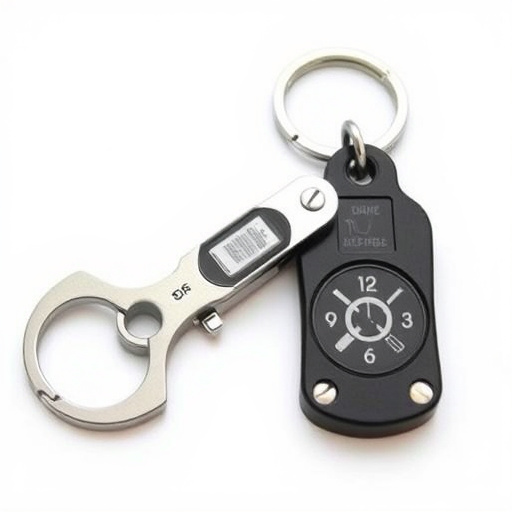In the US, laws regarding self-defense keychain tools vary greatly by state, making it critical to understand local regulations for legal compliance and personal safety. Permitted tools include pepper spray, stun guns, high-intensity lights, and alarms, but power output and usage are strictly regulated. Before purchasing or carrying any device, check state and local laws to avoid legal troubles and ensure the keychain enhances your safety without breaching restrictions.
In today’s world, personal safety is a top priority. One popular self-defense tool gaining traction is the keychain defense device. But are these legal in every state? This article dives into the intricate web of self-defense keychain legal requirements across states, providing an overview of state laws and guiding you through permitted keychain tools, key considerations, and navigating legal boundaries. Discover what truly qualifies as a legitimate self-defense option to ensure your safety while avoiding legal pitfalls.
- Understanding Self-Defense Legalities: An Overview of State Laws
- Permitted Keychain Tools: What Meets the Criteria for Self-Defense?
- Key Considerations: Choosing the Right Self-Defense Keychain
- Navigating Legal Boundaries: Ensuring Your Safety and Avoiding Legal Pitfalls
Understanding Self-Defense Legalities: An Overview of State Laws
In the United States, the legalities surrounding self-defense keychain tools vary widely from state to state. Understanding what’s permitted under each state’s laws is crucial for anyone considering carrying a self-defense device for personal safety. Keychain tools designed for self-defense, such as pepper spray or stun guns, are subject to specific regulations that dictate their use, possession, and accessibility.
Some states have relatively lax restrictions, allowing certain types of self-defense keychain tools without a permit or license. Others have stringent requirements, including age limitations, background checks, and registration. It’s important for individuals to familiarize themselves with local laws before purchasing or carrying any self-defense device. Knowing the permitted self-defense keychain tools in your state can help ensure you stay within legal boundaries while prioritizing your safety.
Permitted Keychain Tools: What Meets the Criteria for Self-Defense?
When considering a self-defense keychain, understanding what tools are legally permitted is crucial. The definition of “permitted self-defense keychain tools” varies across states, but generally, these items are designed to incapacitate or deter an attacker temporarily. Common options include pepper spray, personal alarms, and in some cases, stun guns. Each state has specific regulations regarding the size, capacity, and carry restrictions for these devices.
For instance, pepper spray must often be contained in a small, easily portable canister with a set amount of oleoresin capsaicin (OC) solution, typically around 0.5% to 2%. Stun guns are subject to similar regulations, with limits on voltage and energy output to ensure their use is not harmful to bystanders. It’s essential to check local laws to determine which tools are legal and the specific requirements for their possession and carry.
Key Considerations: Choosing the Right Self-Defense Keychain
When selecting a self-defense keychain, understanding legal requirements is paramount to ensure its permissibility as a personal defense tool. The definition of what constitutes an acceptable self-defense device varies across states, so it’s crucial to research your area’s specific laws. Some jurisdictions classify self-defense keychains as ‘stun guns’ or ‘personal alarms’, subject to different regulations and restrictions on their use. These legal nuances determine factors like power output (for stun devices), permissible places of carry, and the circumstances under which they can be employed legally.
The right keychain should balance functionality with legality, offering features that enhance personal safety without crossing into illegal territory. Permitted self-defense keychains often incorporate high-intensity lights, loud alarms, or even pepper spray mechanisms, designed to startle and deter potential attackers. However, the key is to stay within legal limits, ensuring the device’s power output complies with local regulations, and understanding the consequences of misuse.
Navigating Legal Boundaries: Ensuring Your Safety and Avoiding Legal Pitfalls
Navigating the legal boundaries surrounding self-defense keychain tools is crucial for ensuring your safety and avoiding potential legal pitfalls. Each state in the US has its own set of regulations governing what constitutes a permissible self-defense tool, and it’s essential to understand these laws before carrying any device for self-protection. The keychains designed for self-defense vary widely, from simple pepper spray keychains to more complex stun guns or knife-like devices. However, not all of these are legally allowed everywhere.
States have different classifications for self-defense tools, and what’s permitted in one state might be restricted or illegal in another. Some states allow certain types of pepper spray, while others require permits for carrying stun guns or knives. It’s also important to note that even within a single state, local laws can vary, so always check with your local authorities or legal experts to understand the specific regulations in your area. Carrying a self-defense keychain without knowing these boundaries could lead to legal consequences and undermine the very purpose of having such a tool for protection.
When it comes to self-defense keychains, understanding your state’s legal requirements is paramount. By familiarizing yourself with the permitted keychain tools and navigating the legal boundaries, you can ensure your safety while avoiding potential legal pitfalls. Remember, the right self-defense keychain should be both effective and compliant, allowing you to protect yourself confidently in any situation.
